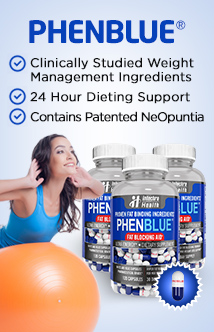
Controlling Portion Size: Diet Tips You Need
- Hits: 4572
One of the most important diet tips you’ll come across has to do with controlling portion size. When it all comes down to it, the key to losing weight isn't to restrict the number of times you eat, but how much you eat when you do. It also has to do with making sure that, no matter how many or how few times you eat during the day, the quantity of each dish you consume is appropriate for your weight goal.
What Do Controlling Portion Size Diet Tips Mean?
Controlling portion size is a critical part of losing weight and is a necessary lesson to learn if you are going to keep the weight off after it's gone. This doesn’t flat-out mean eat less. Starving yourself will never work over the long term. In fact, it is likely to do more harm than good. Instead, it means shifting the amount of each type of food so that you achieve a more nutritious balance and a more appropriate calorie total, without going hungry.
This could mean that you will need to eat smaller meals. If you’re eating far more in quantity than you technically want, controlling portion size can help with that. It might mean eating lots of tiny meals throughout the day. It may mean that you will want to consume more but at fewer meals. However often you eat, make sure the dishes you choose are a reflection of the macronutrient, micronutrient, and calorie totals you’ve set for yourself for the day.
Should You Be Eating Smaller Meals?
Filling yourself to fullness at mealtime is a part of eating that many people have a hard time letting go. There’s nothing wrong with feeling satisfied by a meal, but it is all too common for us to continue eating after that point. Moreover, many of us eat so quickly that we don’t even know when we’ve reached that point until well after it has happened. Remember that it takes around ten minutes for your stomach’s “I’ve had enough” signals to reach your brain.
Therefore, even if you’ve had enough, you’re about ten minutes away from knowing it. To overcome this and practice controlling portion size, use the following diet tips to help you out. Start your meal with what seems to be a reasonable amount of each type of food on your plate. Take your time enjoying it. Pay attention to what you’re eating instead of wolfing it down while watching a video or reading a book. If you’re still hungry when you’re finished. Wait 10 minutes. You can read or watch a show during that time if you want, of course. If you’re still hungry after some time has passed, you can decide if you want another serving and how much it should contain.
The Best Foods to Eat When Controlling Portion Sizes
When you begin to track your calories, macronutrients and other parts of your food, or if you’re just trying to eat more balanced meals, controlling portion size becomes very important. That said, to ensure you’re getting enough food to satisfy your hunger while still staying within your nutrition restrictions, you’ll need to choose the right foods. Most doctors will tell you that a healthy, long-term eating strategy shouldn’t really ban any foods, but there are some foods that you will want to eat more often than others.
Meals should be nutrient dense and calorie controlled. Avoid junk food and empty calorie foods that will leave you hungry for more. This doesn’t mean they’re banned, but leave those as occasional treats instead of part of your regular fare. Instead, choose foods that will satisfy hunger (high protein or high fiber), such as fish, high fiber grains, seeds and nuts.
Diet Tip: Make Sure You’re Getting Enough Protein
Eating protein is an important way to get that needed energy as you strive to eat less, but more often. Not only does protein benefit your body, but it also provides the brain with important amino acids that help to keep you mentally alert. Protein also increases your energy by elevating the brain chemicals called dopamine and nor-epinephrine.
Incorporating protein into your meals is very easy. For example, instead of just having a healthy snack of fruit, try combining it with yogurt for added protein. Protein doesn't have to come from meat either. Low fat versions of yogurt and cheese and eggs are some of the excellent ways to include meat-free protein into your diet, while tofu and beans are among the many plant-based foods you can choose to boost those protein levels while controlling portion size.














